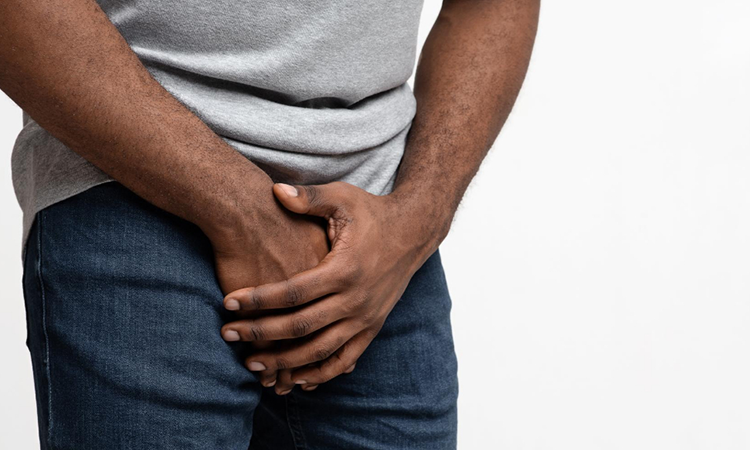What the Latest Research Shows
1. Stem Cell & Regenerative Therapies
A strong body of recent work (preclinical plus early human studies) is pointing toward stem cell therapies (especially mesenchymal stem cells, or MSCs) and adipose‑derived stem cells (ADSCs) as potential treatments that go beyond symptom relief. These therapies may help with:
- Vascular regeneration (repairing small blood vessels in penile tissue)
- Nerve repair (especially after injuries or surgeries like prostatectomy)
- Reducing fibrosis (scarring) in erectile tissue
A 2025 narrative review in BMC Urology emphasized the importance of trophic factors in adipose‑derived stem cell therapy—basically the growth and repair signals needed to restore tissue structure and function. BioMed Central
Challenges remain: varying protocols (which cell source, how many cells, how delivered), long-term safety, and regulatory approval. But for patients who do not respond well to more conventional therapies, this is very promising. registration.uaa2025.org
2. Low‑Intensity Shockwave Therapy (Li‑ESWT)
Shockwave therapy continues to gain ground. Multiple recent clinical trials and meta‑analyses suggest:
- In cases of vasculogenic ED (i.e. ED due to blood‑flow issues), Li‑ESWT can improve erectile function scores (e.g. IIEF‑5) meaningfully compared to placebo. intbrazjurol.com.br
- Some studies report around 4 to 5 point improvements on IIEF‑5 over 6 months for mild‑to‑moderate ED, using protocols like ~12 sessions over several weeks. intbrazjurol.com.br
Caveats include lack of standardization (energy settings, number and spacing of treatments, which parts of the penis are treated), and uncertainty about how durable the improvements are long‑term. intbrazjurol.com.br
3. Platelet‑Rich Plasma (PRP) & Biologics
PRP therapy—where one’s own blood is processed to concentrate growth factors and injected into erectile tissue—is being explored as a regenerative approach. Some key findings:
- A study in India/Urology journal showed significant improvements in sexual function (IIEF scores, desire, satisfaction) over six months in patients treated with PRP vs baseline. urologyjournal.in
- PRP appears relatively safe in the studied settings. But, like stem cell therapy, results are variable and depend strongly on patient selection, how PRP is prepared, and how it's administered. registration.uaa2025.org
4. Neural‑Preserving Surgery & Robotic Techniques
Surgical techniques are also evolving. Notably:
- A trial of a surgery called NeuroSafe in the UK, where surgeons remove only as much prostate tissue as necessary and spare nerves when possible, significantly improved the rates of preserved erectile function post‑prostatectomy, compared to standard surgery. The Guardian
- Robotic prostatectomy procedures combining advanced robotic tools (e.g. da Vinci single‑port + magnetic retraction systems) are being used to improve precision, reduce collateral tissue damage, and preserve erectile nerves. New York Post
These techniques help reduce risks of ED following prostate cancer surgery, which has historically been a major source of long‑term ED for many men.
5. Emerging Drugs & Non‑Pill Therapies
- Melanocortin activators (such as PT‑141) are under investigation. Rather than focusing solely on blood flow, they act via the central nervous system to stimulate sexual desire/arousal. WebMD
- There’s interest in fast‑acting or rapid‑onset formulations of existing drugs (orals, sublingual, or strip forms) for more spontaneity. Also, improvements in side effect profiles are being pursued. healthymale.com
Products & Devices Gaining Attention
MV.Health Devices
A recent development: MV.Health, a sexual wellness brand, has put forward several non‑prescription, non‑invasive devices (vibratory / stimulation devices) that are now being covered by the U.S. Department of Veterans Affairs (VA). These include devices like the Crescendo 2, Tenuto 2, Legato, etc., which use therapeutic vibrations for sexual wellness. This is significant in terms of policy and access. New York Post
MORENOVA® / Renova / ED1000 Systems (Shockwave Devices)
Clinical trials are using devices like MORENOVA®, Renova, and ED1000 for Li‑ESWT protocols. For example, a study with MORENOVA® showed improvements in erection hardness (EHS scores) which persisted up to three months post‑therapy. DirexGroup
Diagnostics & Predictive Tools
- Preoperative MRI is being studied to predict risk of ED after radical prostatectomy. A recent arXiv preprint suggests that combining imaging and clinical data gives a slight improvement over using clinical data alone—though clinical predictions still dominate. arXiv
- Doppler ultrasound, including new techniques to monitor blood flow in neurovascular bundles, is also being explored to help guide therapy choice and to monitor treatment response. arXiv
- For Peyronie’s disease (a related condition that causes penile curvature and can contribute to ED), AI tools are being developed to better measure curvature non‑invasively, improving diagnosis and follow‑up. arXiv
Conclusion & What to Watch Next
ED treatment is moving beyond “one pill fits all.” The future seems to be multi‑modal, regenerative, and tech‑assisted. As evidence grows for treatments like Li‑ESWT, adipose/stem‑cell therapies, and advanced surgical techniques, more men may have access to longer‑term or more complete restoration of erectile function.
If you’re considering treatment, especially less traditional or newer procedures:
- Do your homework
- Consult providers who offer credible evidence
- Use comparison tools like CompareTelehealth to make informed choices














